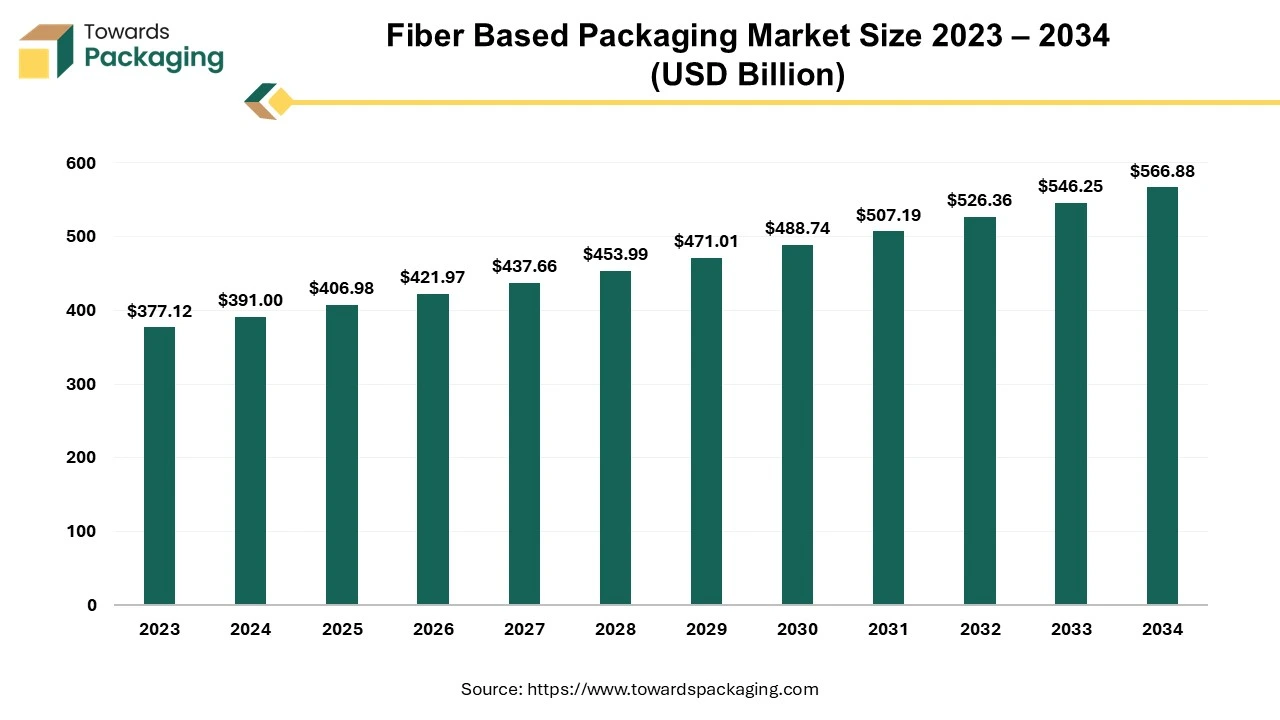Fiber-based Packaging Market Overview
The global fiber-based packaging market was valued at around $377.12 billion in 2023 and is projected to reach approximately $566.88 billion by 2034. This growth reflects a compound annual growth rate (CAGR) of 3.85% from 2024 to 2034.

Download Statistical Data: https://www.towardspackaging.com/download-statistics/5384
The leading companies in the fiber-based packaging market are focusing on inorganic growth strategies, such as mergers and acquisitions, to advance technology for manufacturing fiber-based packaging. This approach is expected to drive the market’s growth during the forecast period.
Key Insights into the Fiber-based Packaging Market:
- North America led the fiber-based packaging market in 2023.
- Asia Pacific is anticipated to experience significant growth in the market during the forecast period.
- Corrugated packaging was the dominant material type in 2023, holding the largest market share.
- Recycled fiber was the leading material source in the fiber-based packaging market in 2023.
- The corrugated boxes segment is expected to grow at a notable rate during the forecast period.
- The food & beverages sector was the largest end-user of fiber-based packaging in 2023.
Market Trends
Shift Toward Sustainable Packaging
As concerns over global warming and environmental issues rise, consumers are increasingly opting for sustainable packaging options. With a growing focus on sustainability, people are gravitating toward brands that offer eco-friendly packaging. Fiber-based packaging, which is biodegradable and recyclable, is seen as a more environmentally friendly alternative to plastic and other non-renewable materials.
Governments around the world have introduced stricter regulations on single-use plastics, encouraging industries to adopt fiber-based packaging solutions. For example, the European Union and several U.S. states have implemented plastic bans or restrictions, boosting the demand for alternatives like paper, cardboard, and molded fiber.
Technological Innovations in Fiber Packaging
Fiber-based materials like paper and cardboard have limitations in resisting oxygen, grease, and moisture. To address these challenges, there has been a rise in innovations such as bio-based barrier coatings made from starches, plant-based waxes, or polymers. These innovations help improve the shelf life and functionality of fiber-based packaging, especially for food and beverage products. Additionally, fiber-based packaging is evolving to meet modern market needs, with the incorporation of smart packaging technologies like QR codes and NFC tags, enhancing the consumer experience and providing better supply chain tracking.